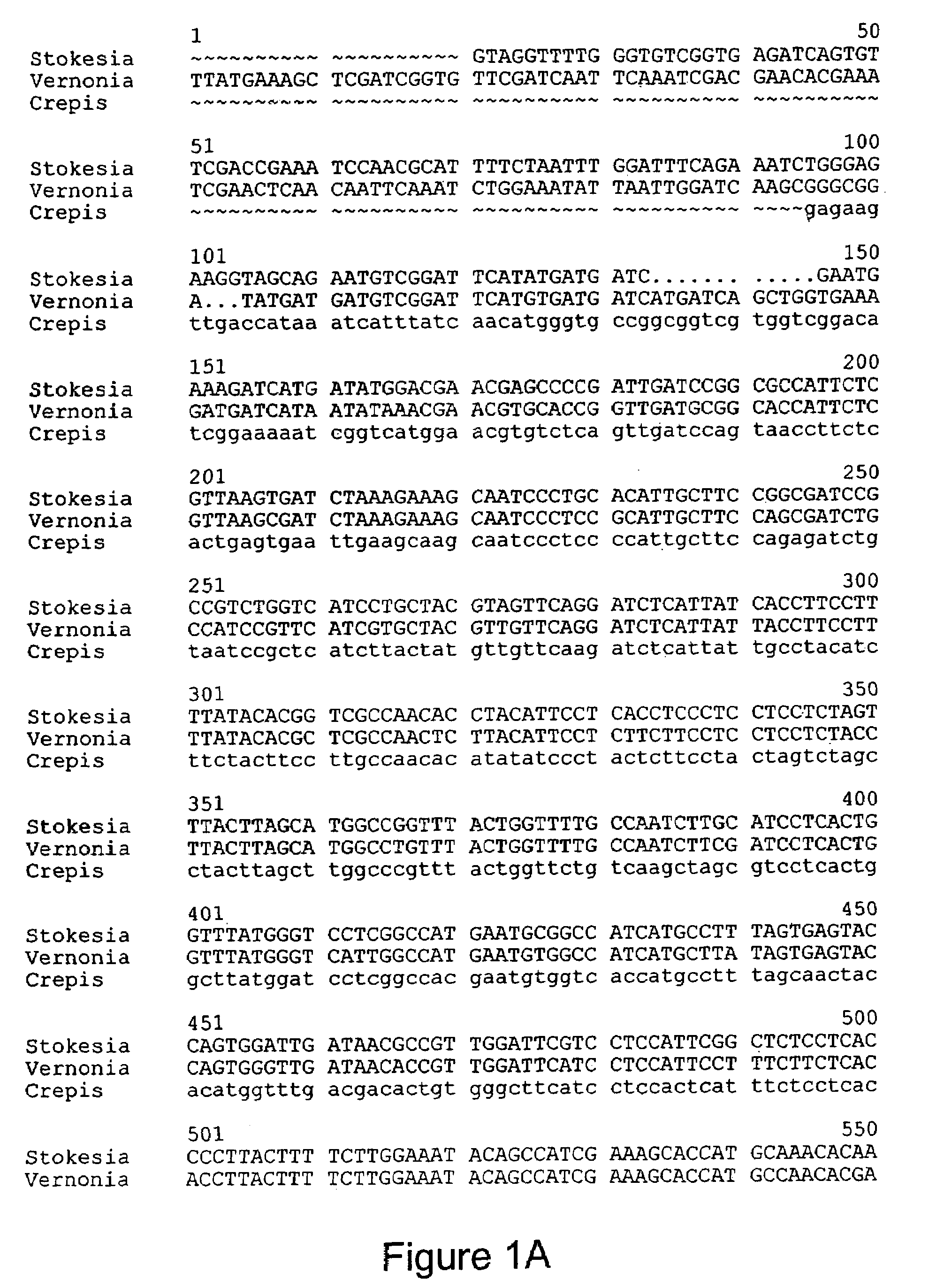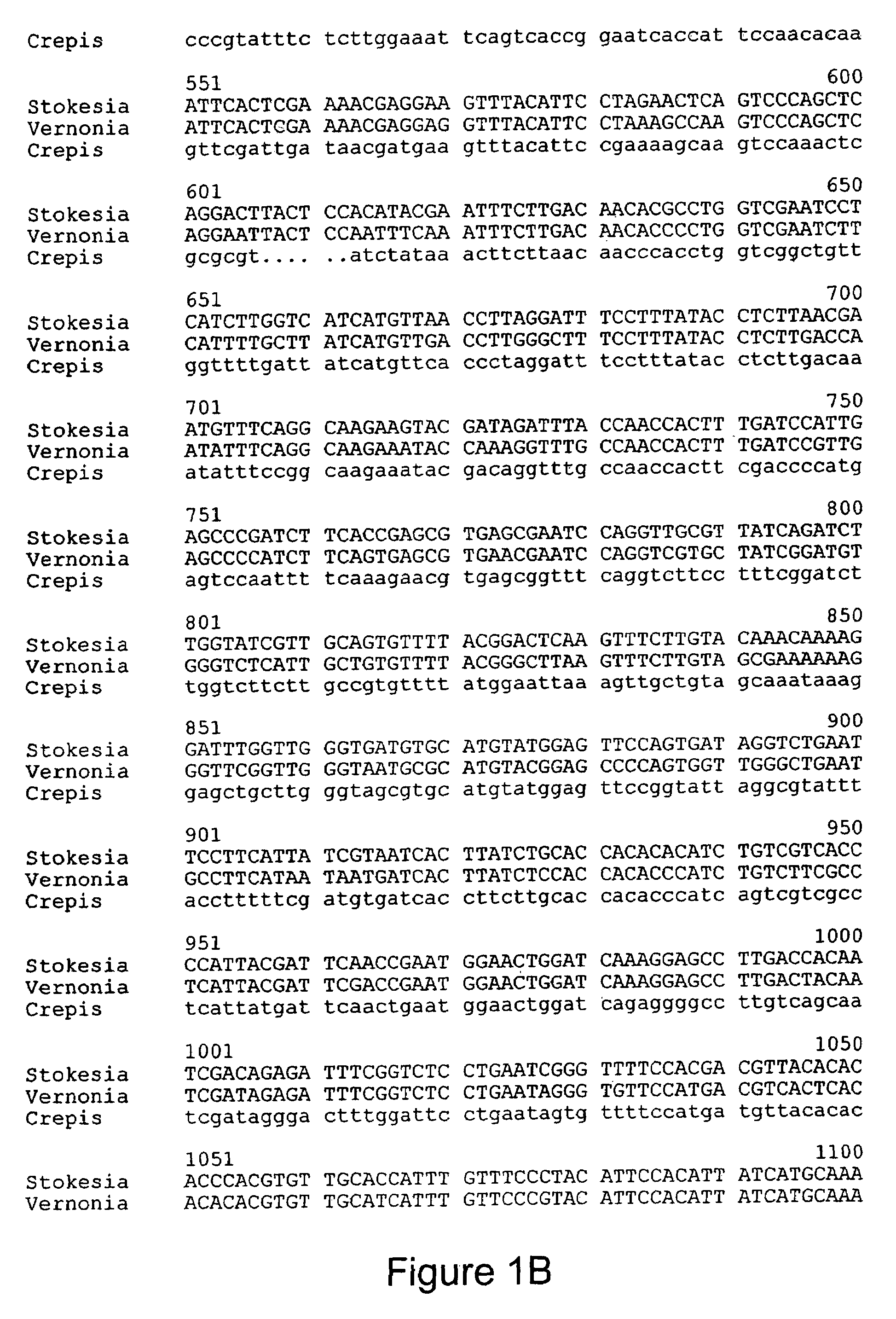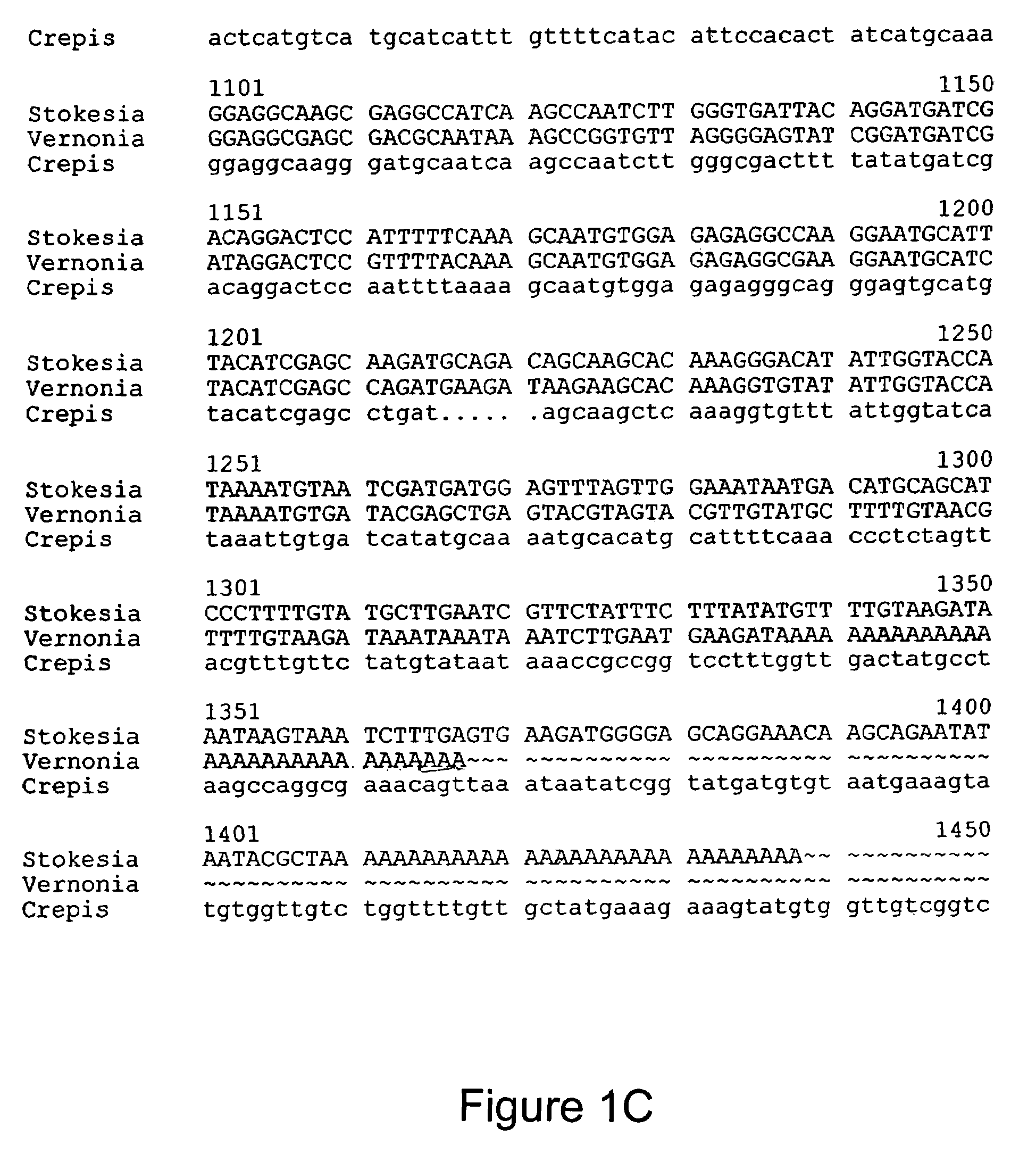Recombinant Stokesia epoxygenase gene
- Summary
- Abstract
- Description
- Claims
- Application Information
AI Technical Summary
Benefits of technology
Problems solved by technology
Method used
Image
Examples
example 1
[0065]A partial Stokesia laevis epoxygenase cDNA fragment was obtained using a RT-PCR kit (Promega) using RNA from developing seeds as a template. The PCR mixtures contained ˜1 g of total RNA template, 0.2 mM dNTPs, 2.5 U of AMV reverse transcriptase, 2.5 U of Tfl polymase and ˜1 M each of two degenerate primers described below. Reaction mixtures were incubated in a thermocycler (Perkin Elmer, Model 2400) for 45 minutes at 48 degrees C., followed by 2 minutes at 94 degrees C. and 40 cycles of 30 seconds at 94 degrees C., 30 seconds at 500 C. and 1 minute at 72 degrees C. The PCR primers used were a 5′ epoxy and 3′ epoxy which represent two peptides sequences, CHECGHHA-SEQ ID NO.3 and HDVTHTHV-SEQ ID NO.4, which peptide sequences are the conserved regions in amino acid sequences of desaturase-like epoxygenases of Crepis palaestina and Vernonia galamensis and delta 12, extracted from the gel using Gel Extraction kit (Qiagen) and subcloned into the pGEM-T Easy vector (Prome...
example 2
Cloning of Stokesia epoxygenase cDNA for Expression in Arabidopsis thaliana
[0069]The epoxygenase cDNA of Stokesia was expressed in Arabidopsis thaliana. A BsmBl site was introduced at the first ATG and a Sinai site was introduced at the end of the ORF (Qpen reading frame or coding sequence) of the cDNA by PCR mutagenesis. The ORF sequence of the cDNA was amplified using two primers: StexpF (GACGCGTCTTCCCATGTCGGATTCATATGATG-SEQ ID NO. 7and StexpR (GACGCCCGGGVrACATTTTATGGTACCAAT-ATGTCCC-SEQ ID NO.8, BmsBl and Smal sites are underlined), and cloned into the pGEM-T Easy vector and verified by DNA sequencing. The BsmBl-Smal fragment covering the entire open reading frame of the cDNA was cut out from pGEM-T Easy vector and ultimately cloned into the respective site of pPHI4752 vector, which contains a phaseolin promoter cassette. The PstI fragment including the cDNA with the phaseolin cassette was cut out from the pPHI 4752 vector and cloned into the respective multi-cloning site of pcam...
example 3
Transformation of Arabidopsis thaliana Plants as a Control.
[0071]Arabidopsis thaliana ecotype Columbia plants were transformed with the Agrobacterium carrying pCAMBIA-ST or pCAMBIA 1201 using a simplified dipping method (Clough and Bent 1998). T1 seeds were collected and cultured on selection media (MS salts, B5 vitamins, 1% sucrose, 25 mg / L hygromycin, 500 mg / L cefotaxime and 0.8% Phytagar, pH 5.8). Surviving plantlets were transferred into soil and T 2 seeds were collected.
PUM
| Property | Measurement | Unit |
|---|---|---|
| Temperature | aaaaa | aaaaa |
| Fraction | aaaaa | aaaaa |
| Fraction | aaaaa | aaaaa |
Abstract
Description
Claims
Application Information
 Login to view more
Login to view more - R&D Engineer
- R&D Manager
- IP Professional
- Industry Leading Data Capabilities
- Powerful AI technology
- Patent DNA Extraction
Browse by: Latest US Patents, China's latest patents, Technical Efficacy Thesaurus, Application Domain, Technology Topic.
© 2024 PatSnap. All rights reserved.Legal|Privacy policy|Modern Slavery Act Transparency Statement|Sitemap



